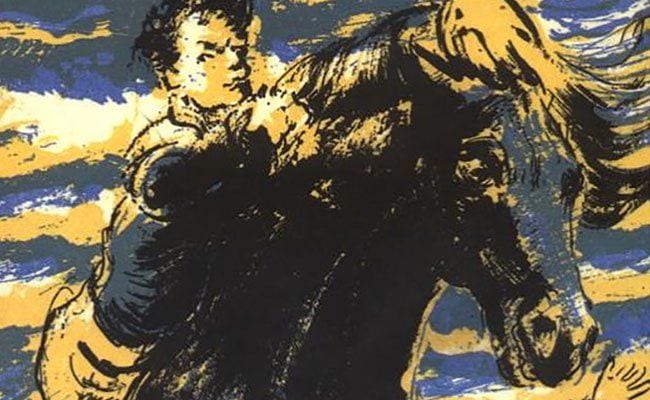
One of Ireland’s most beloved authors of children’s novels, Ellís Dillon practiced an economy of style in her work that was spare yet incredibly rich in its sense of atmosphere. Despite the fact that her books were intended for a young audience, the level of her writing achieved such distinguished heights that it appealed to an older generation as well.
Having authored around 50 novels, Dillon was passionately indebted to her homeland; many of her stories take place on the shores of Ireland and her writing is rife with the lush descriptors befitting her country’s rugged geography. One of the many children’s books she wrote, The Island of Horses is a hard-stoned paean to Irish coastal life, a narrative of a work-strong, sea-faring people, told with evocative and passionate prose.
Danny and his best mate Pat are two young boys living off the coast of Inishrone (a fictional island that is possibly a stand-in for the real-life Inishcrone). Amidst getting up to their usual mischief and daily chores, Danny and Pat take a venture one day out to the Island of Horses, a tiny island steeped in an aura of mystique (said to be haunted by the ghosts of Spanish marauders). Stories abound of sailors making the trek out to the island, never to return.
There’s also talk of the strange horses that inhabit the land; ghostly beasts that storm the oceans and then mysteriously disappear. Only looking for a bit of escape from the daily grind of their working days, Danny and Pat let their sense of adventure get the better of them when they decide to rope in a beautiful black colt and bring it back with them to Inishrone.
The deed sets off an odd chain of events, which bear the undercurrents of regional politics. The people of Inishrone harbour animosities with their neighbouring island people; Danny and Pat’s Equus discovery brings to the surface mounting tensions between the regional groups, not helped by the fact that Pat’s family, through marital relations, have their hands entangled in these cultural affairs. An element of mystery sees Danny and Pat later kidnapped by horse traders and left to their devices to engineer an escape.
However, the mystery plot is beside the point here; Dillon’s cinematic rendering of the Irish landscape is the star here as is her poignant reflection on childhood life in rural towns. Flushed with an air of nostalgia for a bygone era (the story was published in 1956), Dillon’s language is sculpted with the baroque reserve of antique furniture: old-fashioned and eternally beautiful. Although the language is articulated with a way of speech lying just outside the modern vernacular, her words gleam with a golden, rococo finish. As a writer gifted with a skill in concrete imagery, Dillon’s greatest strength is her ability to summon a wealth of emotion with just a painterly descriptor. Matching textile sensation with visual vibrancy, the author turns over lines of prose with a practiced sleight-of-hand.
Admittedly, the story is plodding at times and takes its time to unfold. There’s a lot exposition that requires a good amount of patience to get through. But such is the case when a narrative is rooted inextricably to its setting. After some time, between the villainous merchants, sailors and mysterious horses, it is, in fact, the windswept Irish landscape that emerges as the true character of the story.
New York Review Books rescues a European classic from obscurity. Dillon is certainly a name amongst UK’s yesteryear’s generation, but her work, unfortunately, doesn’t resonate with familiar timbre on North American shores. Beautifully rendered with its original dust cover artwork, NYRB’s handsomely designed hardback reintroduces this work as both a collector’s item and a venerable sampling of Irish children’s literature.

